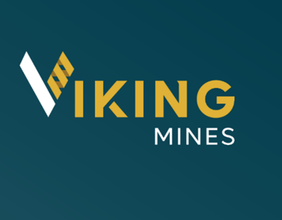Part of Human Resource (HR) operations involves designing and implementing several vital processes to ensure effective onboarding. Onboarding and orientation processes are essential to welcoming new hires to an organisation. While both sound the same, their functions, purpose, and executions are quite different.
HR professionals strive to increase employee engagement and productivity through various processes and systems during onboarding and orientation. It's essential to distinguish between onboarding vs. orientation to understand how they matter to organisations interested in increasing employee engagement numbers.
Defining Onboarding
Onboarding is a broader process than orientation. It integrates new hires into the workplace and introduces them to the company's culture. Networking goes beyond just initial introductions; it requires ongoing and regular support over weeks or months.
From training and mentorship to socialisation, this journey gives employees the tools needed to succeed in their roles and thrive in the organisation. When employees spend time on onboarding tasks, it allows organisations to create belonging and ascertain value alignment.
Understanding Orientation
Orientation is an introductory course, usually lasting a day or two. This type of briefing mainly involves sharing information related to company policies, benefits, and procedures. It aims to help employees understand essential things they should know before working.
What Are The Differences?
Learning the differences between onboarding and orientation enables HR teams to design each process to serve a specific purpose. Orientation creates a framework, while onboarding helps new hires interact with team members and understand the company culture.
Though informative, orientation is a formal event created to teach the basics of how to operate in the workplace. It answers pressing questions, but not in a way that would take several days like onboarding does.
Moreover, onboarding is a continuous process. It does not stop after an employee has been fully assimilated into the workplace. However, orientation is relevant only at the beginning of an employee’s tenure.
By interpreting these differences, HR can develop strategies to tackle employee issues and ensure long-term results. This can improve job satisfaction and reduce employee turnover rates.
Effect On Employee Engagement
Onboarding is one of the most significant contributors to employee engagement. New hires feel supported and valued, increasing their commitment to their new jobs. This goes beyond just learning the job; it is understanding how their work contributes to the bigger picture. Employees who are engaged show increased productivity, innovation, and loyalty, ultimately leading to improved business results.
Retention And Employee Turnover Statistics
Many companies face turnover problems. A strong onboarding program can address this problem. Providing a conducive environment for employees' well-being minimises the chances of premature exits. A good onboarding experience addresses concerns as they arise, ensuring employee retention. As a result, companies incur lower recruitment costs while avoiding high turnover.
Customisation And Personalisation
Customisation is one of the most critical aspects of successful onboarding. Offering personalised experiences shows dedication to employee development. Personalised approaches to onboarding consider diversity in learning styles and preferences, with new hires receiving information in formats that align with the styles they respond to best. Such attention to detail creates an atmosphere of innovation and collaboration.
Cultivating A Healthy Work Environment
A workplace culture has a tremendous impact on employee satisfaction. For this reason, a key aspect that needs attention during onboarding is whether new hires are aligned with the organisation's value system. Onboarding allows HR teams to ensure employees understand how the company works and what is expected of them going forward.
Employees learn about teamwork and organisational spirit through interactions with colleagues and team activities. A positive culture does not just attract talent; it also retains them, making it a better work environment.
Role Of Technology In Onboarding
Technology makes onboarding smoother and boosts efficiency. Digital platforms do this by stimulating employee communication, ensuring new hires can contact the right people and access information whenever needed.
Virtual onboarding sessions allow teams worldwide to meet, thus transcending geographical boundaries. HR professionals use a technology-backed approach to mold an onboarding experience that matches the new-age workplace requirements.
Continuous Improvement
Regular assessment of onboarding programs leads to constant improvement. New hires can help improve both onboarding and orientation processes by sharing specific details for improvement. Feedback enables HR teams to develop better strategies. An adaptable onboarding process ensures an organisation can implement effective processes even as industry trends change.
Conclusion
Understanding the difference between onboarding and orientation is vital for human resources professionals dedicated to ensuring new hire success. Orientation provides essential details, but onboarding includes a deeper exploration of company culture.
When these processes are separated, organisations promote an environment where new hires can flourish and drive the organisation toward long-term success. Investing in high-performing onboarding strategies can enhance employee engagement as organisational growth becomes possible.
This article has been provided and sponsored by David Wade. David Wade is a seasoned HR strategist and writer with a keen eye for the nuances that shape employee experiences.




